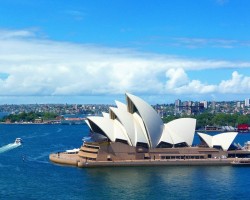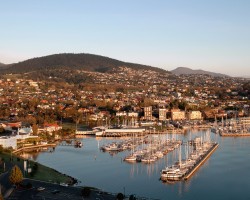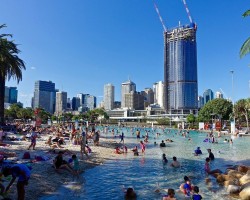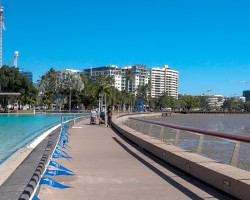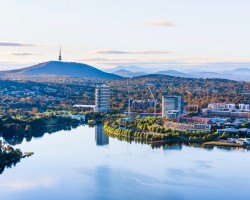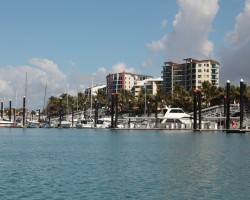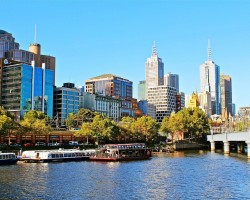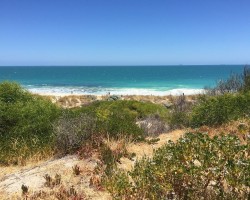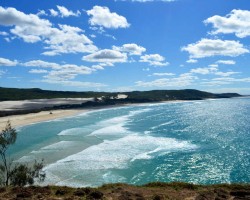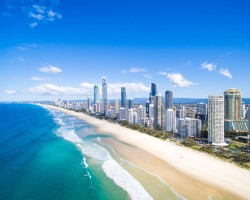Best time to go to Australia for a perfect weather and where to go?
When is the best time to go to Australia?
There isn't really a best time to go to Australia, as this vast country can be visited all year round because the weather is always nice somewhere! However, it is necessary to choose the right time to go to the right region, as the climate varies greatly between the center, the north, and the south. It is worth noting that Australia is located below the equator, so the seasons are reversed compared to Europe.
- Summer, from December to March, is the perfect time to visit the southernmost regions, as well as Tasmania. The temperatures are very pleasant, even hot, and you can enjoy the beaches. However, it is best to avoid the Red Center (around Alice Springs) as the heat can be scorching. In the north, it is the rainy season: the climate is humid and rainfall is almost daily. That being said, the vegetation is lush and it is warm. If you want to avoid the peak tourist season during this period, consider visiting in February and March, which are less crowded.
- In autumn, from March to May, it is the low season, so if you are on a tight budget, you can find interesting rates. Temperatures are reasonable across the country and the forests in the south display fairy-tale colors. It is a good time to explore the Outback in the center, Western Australia, and the north, where rainfall is much less frequent.
- Winter, from June to August, is the right time to travel through the north and center of the country without suffering from the heat. It is hot and dry, making it the perfect time to enjoy the beaches and national parks. For diving and snorkeling enthusiasts, this is when the Great Barrier Reef is most spectacular. However, it is not the best time to visit southern Australia: the weather is rainy, and temperatures are quite cool, even in Sydney. Unless you want to ski in the Australian Alps or see the Southern Lights in Tasmania!
- Spring, between September and November, is the ideal time if you want to take a long journey through several regions of Australia. The weather is pleasant everywhere! The downside is that this corresponds to the peak tourist season. Prices soar for on-site activities, and the most famous spots are crowded.
In summary, when to go to Australia? As you may have understood, it depends on several factors: first, your desires, as a trip to the tropical areas in the north will be very different from a trip to the arid plains of the Red Centre or the beaches of the Gold Coast. Then, your budget: Australia is an expensive destination all year round, but some periods are particularly costly, such as July and August when flight prices skyrocket. Finally, the time available on-site: the country is so vast that many travelers spend several weeks there. It is wise to carefully consider the weather peculiarities of each region to plan your itinerary.
Where and when to go based on the weather?
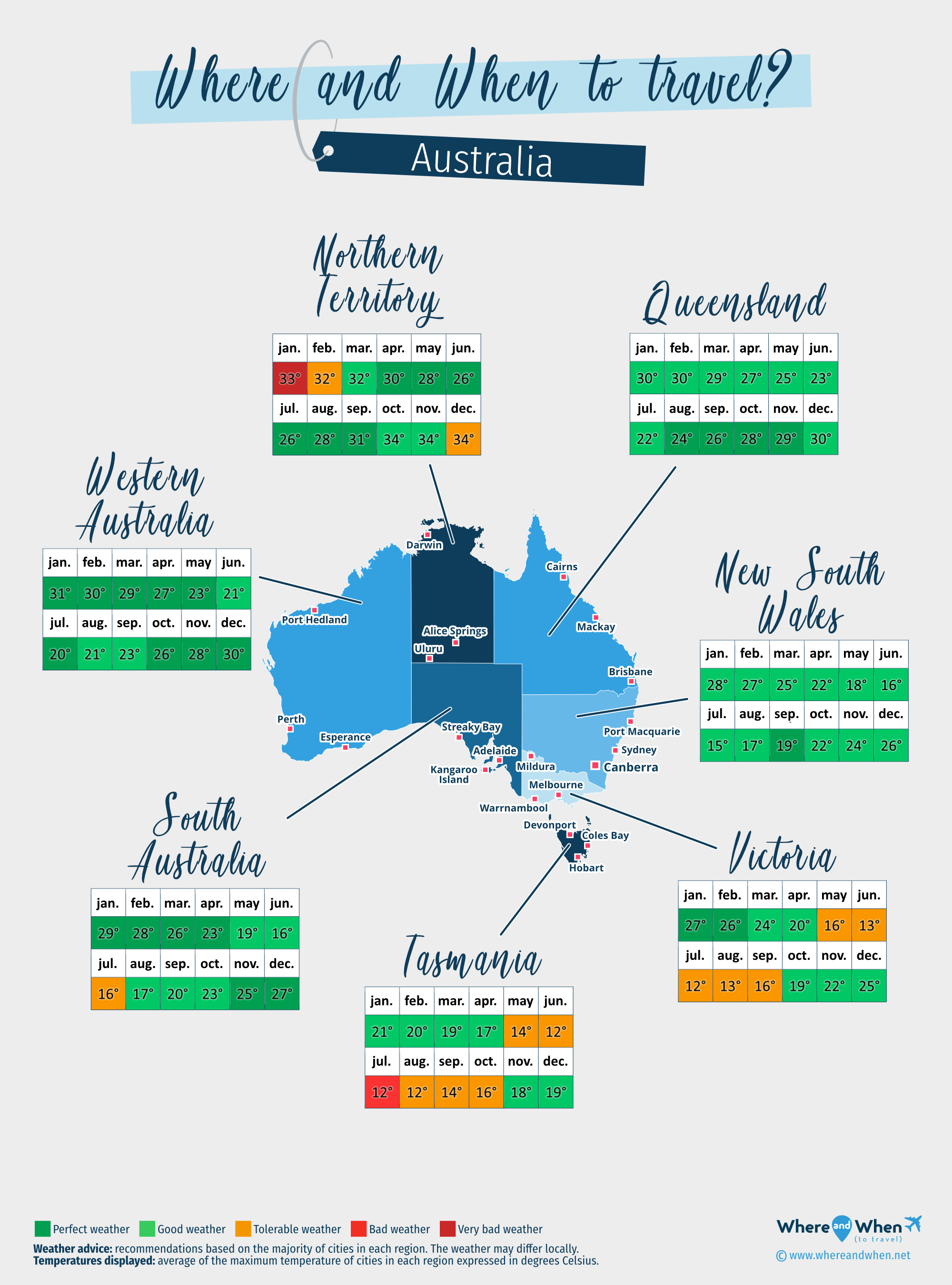
New South Wales
Sydney, Canberra, Port Macquarie...
Northern Territory
Darwin, Alice Springs, Uluru (Ayers Rock)...
Queensland
Brisbane (Queensland), Cairns, Mackay...
South Australia
Adelaide, Kangaroo Island, Streaky Bay...
Tasmania
Hobart, Devonport, Coles Bay...
Victoria
Melbourne, Mildura, Warrnambool...
Western Australia
Perth, Esperance, Port Hedland...
To get all the information about the climate and weather in Australia for a specific month, click on the corresponding link below:
Australia in january Australia in february Australia in march Australia in april Australia in may Australia in june Australia in july Australia in august Australia in september Australia in october Australia in november Australia in december
Best time to travel to Australia by cities
Climate and Weather in Australia
Due to the size of the country, its relief, and its geographical position, Australia's climate is diverse. Located in the heart of the Indian Ocean, not far from New Zealand, and crossed by the Tropic of Capricorn, Australia experiences very large variations depending on the regions. Here are the main types of climates:
- An oceanic climate with mild summers found around Melbourne, along much of the southern coast, and in Tasmania.
- A humid subtropical climate without a dry season and with hot summers is present in New South Wales (Sydney and Canberra), as well as in southern Queensland around Brisbane.
- A Mediterranean climate with mild summers in the Adelaide region, along the coast of South Australia, and up to Perth.
- A hot and dry desert climate mainly prevails inland: in the Red Centre, but also over much of Western Australia.
- In the far north, there are various tropical climates, more or less humid depending on the area: tropical savanna with a dry winter around the Great Barrier Reef and Darwin, monsoonal in the Cairns region, or even equatorial around Innisfail.
Australia's weather is also marked by regular natural disasters, exacerbated by climate change and the deterioration of the ozone layer. Periods of extreme drought, floods, and bushfires particularly affect the south, while the north can experience devastating cyclones. The country is unfortunately accustomed to these events, and authorities are very effective in preventing and protecting the population if such a phenomenon were to occur during your stay.
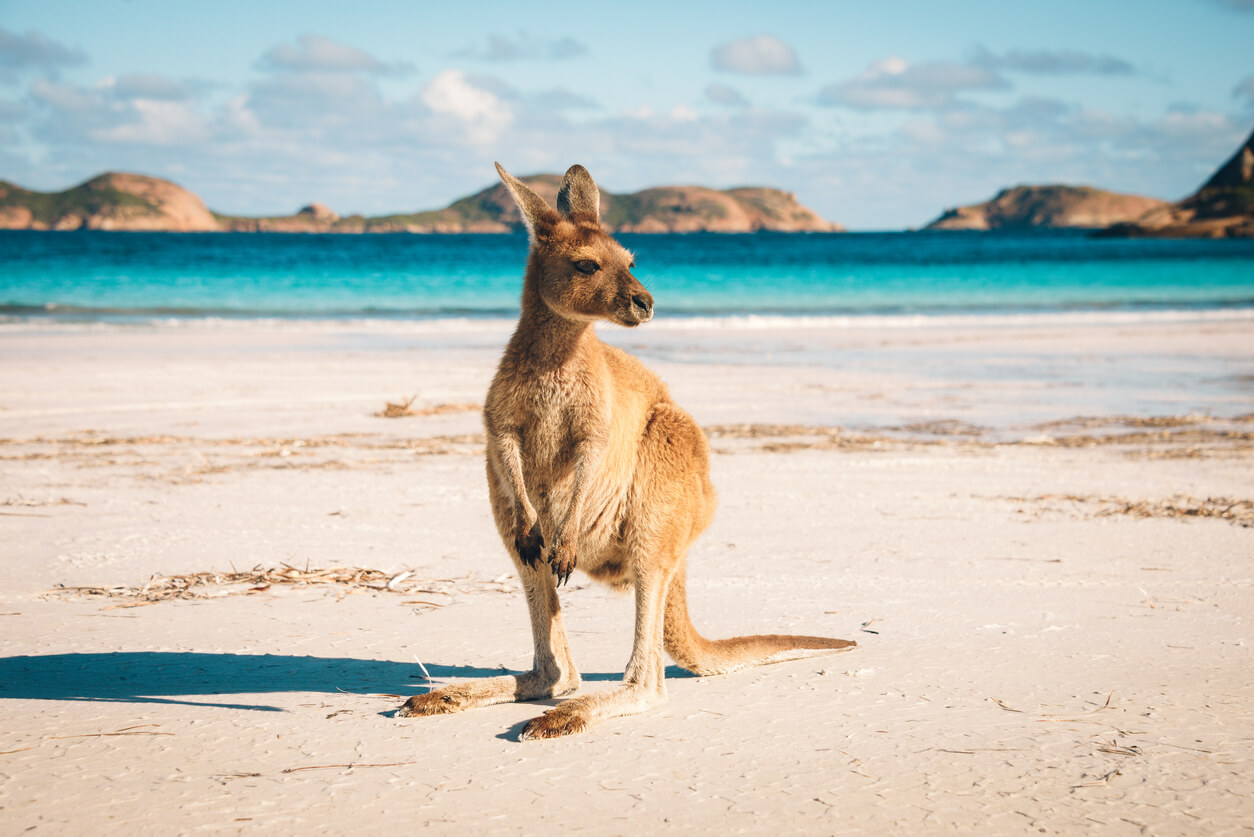
Climate in New South Wales
This southeastern Australian state experiences several types of climates: along the coast, towards Sydney and further north, the trend is a humid subtropical climate without a dry season and a warm summer, meaning it can rain all year round, but temperatures remain pleasant. In winter, from June to late August, the minimum temperatures hover around 10°C (50°F) , but rise to around 20°C (68°F) at the hottest part of the day. In summer, from December to March, it is not uncommon for the thermometer to exceed 35°C (95°F) .
Further south, towards Canberra, the climate is more oceanic and temperatures are less extreme, especially in summer. In the west of New South Wales, towards the interior of the continent, the climate is more arid and hot. It is therefore entirely possible to visit this part of Australia at any time of the year.
Climate in the State of Victoria and Tasmania
Located at the extreme south of Australia, these two regions are the wettest in the country. With their mountainous reliefs, they are characterized by very changeable weather on a daily basis: it can be sunny one moment, then a heavy shower can suddenly occur. It is no wonder that Melbourne is nicknamed "the city of four seasons in one day"! This part of the country experiences weather that is very similar to that of Auckland in New Zealand, its neighboring country.
Generally, the oceanic climate offers pleasant weather for much of the year. In summer, from June to September, the heat is not intense as the average temperature is 26°C (79°F) on the mainland and 20°C (68°F) in Tasmania. Between early May and late September, the atmosphere is cooler. Seasonal norms range between 12 and 16°C (61°F) depending on the month and location.
Climate in South Australia
Located further north than the State of Victoria, South Australia experiences a hotter and less humid climate. Along the coast, towards Adelaide, it is Mediterranean to temperate in summer. In summer, from December to March, temperatures range between 25 to 27°C (81°F) , while in winter, from June to September, they rarely drop below 14°C (58°F) , with July being the coolest month of the year. However, the further inland towards the north, the more desert-like and extreme the climate becomes. For example, expect peaks of 38°C (101°F) in places like Oodnadatta or Coober Pedy in January.
Climate in Queensland
Nicknamed the "Sunshine State", Queensland enjoys about 300 days of sunshine per year, fewer meteorological variations than in the south of the country, and relatively high temperatures throughout the year. While in the south of the state, towards Brisbane, the climate is temperate, it becomes increasingly tropical and humid as you head north towards the Top End. In the outback, heading towards the center of the country, the climate is much hotter and drier.
There are two distinct seasons: a hot and humid summer from November to May, and a mild and dry winter from June to October. Rainfall is significant between December and February, especially in the far north affected by monsoons. The common factor in these two seasons, however, is the heat. Indeed, except for the slightly cooler months of July and August, temperatures range between 25 and 30°C (86°F) for the rest of the year.
Climate in Western Australia
The western part of Australia experiences favorable weather all year round. Like elsewhere, there are numerous regional specificities, with climates ranging from desert to Mediterranean, passing through arid or even tropical zones in the north.
During the summer season, from December to March, it gets very hot in the north, with temperatures close to 40°C (104°F) in Karijini National Park or Derby. In the south of Perth, the maximum temperatures are more moderate: around 25°C (77°F) . In winter, from June to September, the north is marked by a still warm atmosphere as temperatures climb to around 30°C (86°F) , while in the south the weather is much cooler with averages between 15 and 20°C (68°F) depending on the regions.
Climate in the Northern Territory
Two very different types of climates are distinguished in the Northern Territory:
- Tropical on the coast and around Darwin: temperatures are fairly constant throughout the year, around 30°C (86°F) , but from December to February, there is a lot of rain, up to 20 days per month.
- Hot and dry desert climate in the Red Centre, around Alice Springs: in summer, from December to March, the weather can be scorching, with averages close to 40°C (104°F) . If you plan to visit, it is best to go between May and October. Temperatures are then mild and the sun is shining. However, nights can be very cold.
Temperatures and rainfall in Australia
On these 3 graphs, we present the evolution of temperatures of Australia and month-by-month rainfall for the cities of Sydney, Hobart, Adelaide, Alice Springs and Brisbane (Queensland), as well as the month-by-month sea temperature for coastal cities.

Peak visitor numbers and tourist seasons in Australia
Find out when Australia has its high tourist season (the period when the influx of tourists is highest) and off-peak tourist season using our data and figures.
Tourist seasons in Australia
The months with low numbers of tourists are: February, March, May, June and November. The number of visitors to Australia is high in: January, April, July, August, September, October and December.
- Very low season in Australia: February, March, May, June and November.
- High season in Australia: January, April, July, August and September.
- Peak season in Australia: October and December.
Figure: Visitor index for Australia month by month
Average price for flights to Australia
A return flight between London and Sydney is generally cheaper if you go in may ($ 1092 on average): this is the best time for travellers on a tight budget. In contrast, you may end up paying $ 588 more for your airline ticket to Sydney if you go in august.
Where to go in Australia?
This table allows you to see the maximum temperature for each city and our opinion on the weather month by month (see colour legend below the table).
| Cities | jan. | feb. | mar. | apr. | may | jun. | jul. | aug. | sep. | oct. | nov. | dec. |
| Sydney | 81°F | 79°F | 77°F | 74°F | 70°F | 65°F | 65°F | 67°F | 70°F | 74°F | 76°F | 79°F |
| Hobart | 70°F | 70°F | 67°F | 63°F | 58°F | 54°F | 54°F | 56°F | 58°F | 61°F | 65°F | 67°F |
| Adelaide | 81°F | 79°F | 77°F | 72°F | 65°F | 59°F | 58°F | 59°F | 63°F | 68°F | 74°F | 77°F |
| Alice Springs | 97°F | 95°F | 90°F | 83°F | 74°F | 67°F | 68°F | 74°F | 83°F | 88°F | 94°F | 95°F |
| Brisbane (Queensland) | 85°F | 83°F | 81°F | 77°F | 74°F | 70°F | 68°F | 72°F | 76°F | 79°F | 81°F | 83°F |
| Cairns | 86°F | 88°F | 86°F | 83°F | 79°F | 77°F | 77°F | 77°F | 81°F | 85°F | 86°F | 88°F |
| Canberra | 85°F | 79°F | 76°F | 68°F | 59°F | 54°F | 52°F | 54°F | 61°F | 67°F | 74°F | 79°F |
| Darwin | 90°F | 88°F | 90°F | 90°F | 88°F | 86°F | 86°F | 88°F | 92°F | 92°F | 94°F | 92°F |
| Mackay | 85°F | 85°F | 83°F | 79°F | 76°F | 72°F | 72°F | 72°F | 76°F | 79°F | 83°F | 85°F |
| Melbourne | 79°F | 79°F | 74°F | 68°F | 61°F | 58°F | 56°F | 58°F | 61°F | 67°F | 72°F | 76°F |
| Perth | 90°F | 90°F | 86°F | 79°F | 72°F | 67°F | 65°F | 65°F | 68°F | 74°F | 81°F | 86°F |
| Uluru (Ayers Rock) | 97°F | 95°F | 92°F | 83°F | 72°F | 65°F | 67°F | 72°F | 81°F | 88°F | 94°F | 95°F |
| Esperance | 77°F | 77°F | 76°F | 72°F | 67°F | 63°F | 63°F | 63°F | 65°F | 68°F | 72°F | 74°F |
| Fraser Island | 85°F | 85°F | 83°F | 79°F | 74°F | 70°F | 70°F | 72°F | 76°F | 77°F | 81°F | 83°F |
| Gold Coast | 81°F | 81°F | 79°F | 76°F | 72°F | 68°F | 68°F | 70°F | 72°F | 74°F | 77°F | 79°F |
| Kangaroo Island | 74°F | 74°F | 72°F | 68°F | 65°F | 61°F | 59°F | 59°F | 61°F | 65°F | 68°F | 70°F |
| Mildura | 95°F | 92°F | 85°F | 76°F | 68°F | 61°F | 61°F | 63°F | 70°F | 79°F | 85°F | 90°F |
| Port Hedland | 97°F | 97°F | 97°F | 95°F | 88°F | 81°F | 81°F | 85°F | 90°F | 95°F | 95°F | 97°F |
| Port Macquarie | 81°F | 79°F | 77°F | 74°F | 70°F | 65°F | 65°F | 67°F | 70°F | 74°F | 77°F | 79°F |
| Streaky Bay | 81°F | 81°F | 77°F | 74°F | 68°F | 63°F | 63°F | 63°F | 67°F | 72°F | 76°F | 79°F |
Legend:
perfect weather
good weather
tolerable weather
bad weather
very bad weather
About Australia
What can I do in Australia?
Beaches / swimming
Nature and countryside
Culture and heritage
Sports
Family travel
Crafts / shopping
Gastronomy
Nightlife
Is this weather information for Australia reliable?
Climate data for Australia has been gathered every day since January 2009. The analysis of these meteorological data for Australia allows us to determine the average for each month in Sydney, Hobart, Adelaide, Alice Springs, Brisbane (Queensland), Cairns, Canberra, Darwin, and 133 other cities.
So yes: this data is reliable except in cases of temporary climate disruption in the region.

